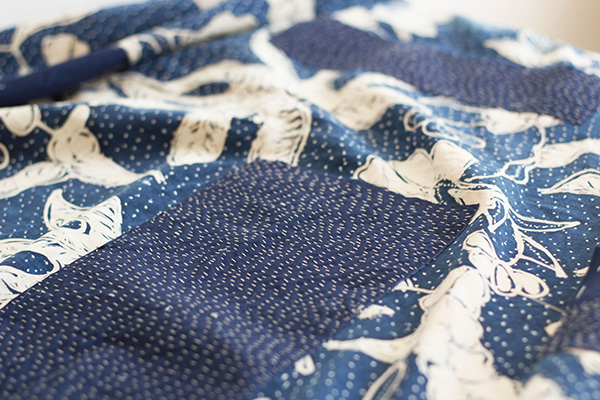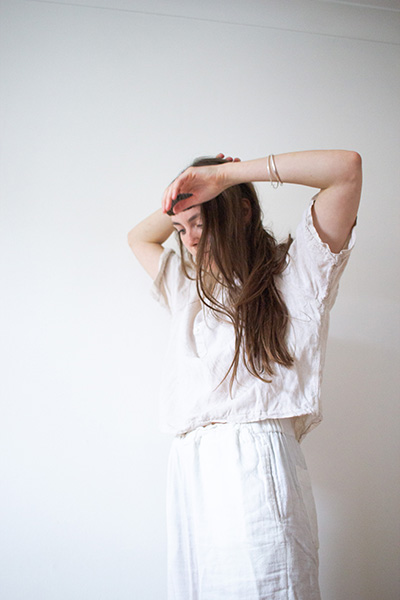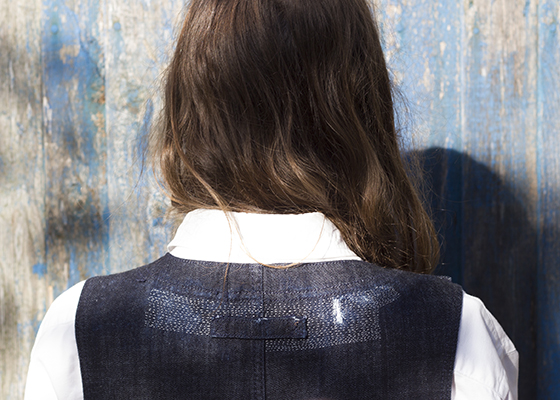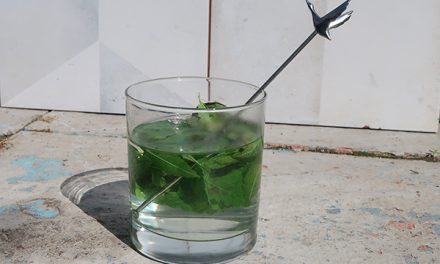10 Questions For Molly Martin
Image: Molly Martin
Molly Martin is an Artist, Illustrator and Maker. Through the art of Japanese Sashiko repair she has found a way to connect with the things we wear. We caught up with Molly following her successful collaboration with Toast to find out how repair techniques can be used to combat fast fashion.
We first discovered Molly Martin through Toast’s Sashiko repair workshops, where she taught customers to repair damaged clothes using the Japanese mending technique. Molly’s beautifully simple and thoughtful work with garments imbues a love and respect for the things we wear. Something that has been lost through our insatiable need for new things. She believes that through learning to love the imperfectness of our garments, we will buy less and not be so quick to dispose of things.
Not just a practical skill, mending has become a meditational practise known as ‘mendfulness’, a word coined by Katrina Rodabaugh. Not only does sashiko physically mend clothes, but it acts as a moment of stillness. Not only does it help us reflect on our lives, but also our relationship with our posessions and consumption habits.
The Vendeur: You are an illustrator as well as a mender, do you feel that one influences the other?
Molly Martin: I’m not sure if my illustration work influences my repair work or vis vera – but I approach each practice in a similar way. I have a careful and considered approach to all of my work, which I feel like you can see in the relation between both mediums.
TV: What mediums do you use when creating your illustrations?
MM: My favourite medium is gouache and pencil. I use Caran d’ache colour pencils and almost always use moleskine paper. I also have a habit of buying lots of plain paper notebooks from Muji – so good.
TV: Where did you first discover sashiko and what does the technique mean to you?
MM: I discovered sashiko whilst repairing delicate dresses for the slow fashion company Egg. Working exclusively for the shop as a clothing repairer, I was often sent very delicate and expensive outfits with large gashes or tears in all sorts of places. Inspired by Sashiko repair, I realised that if I patched the tears from behind with a similar fabric and then applied repetitive stitches over the top of the worn cloth – it would reinforce the damage as well as close the tear or hole.
TV: What is the difference between darning and sashiko and why do you prefer sashiko?
MM: Sashiko is a different process from darning, which requires wool to weave a bridge over the hole. For sashiko repair – you have to take a cut patch or spear piece of cloth and sew it directly onto the damage in question. I sew through the fibres to reinforce it. Sashiko is the stitch and translates as ‘Little stab’. Boro is the cloth and translates as ‘Little scrap’.
Enjoying this article?
Then you'll love our Newsletters. At the beginning of each month, we send you the low down for the month ahead, featuring news and our favourite responsible products and brands you need to know about. And whats more, you receive all of this direct to your inbox before anyone else.
“Repair is important to me because it stands for a wider interest in how we can preserve and waste less in our current throw away and fast fashion climate.” – Molly Martin
TV: Do you feel that the demand for repairing has grown in recent years?
MM: There has been a recent surge of interest over recent years in clothing repair and I often wonder if this is coming from a feeling of disconnect; born from the lack of input we experience in our modern day climate. Everything we eat, drink, wear; the chairs we sit on and the beds we sleep in have been made by someone else in a place we don’t know. I believe we are searching for a deeper connection to our everyday purchases and possessions. Therefore by using our hands to create something ourselves, we have a better chance of finding that connection.
TV: Do you use any other repair techniques?
MM: Although inspired by Sashiko repair – I don’t follow the traditional methods totally. I generally use a patch to cover the tear or worn fabric; either inside or outside the clothing and then I sew through the patch either way with sewing cotton or embroidery thread – but each repair is a little different every time.
TV: Why is it important to you to mend and repair garments?
MM: Today the fast fashion industry is revolved around consuming; buying and throwing away at the same rate. A family in the western world throws away an average of 30kg of clothing every year. With only 15% donated to charity or recycled – with the rest going directly to landfill or is incinerated. Repair is important to me because it stands for a wider interest in how we can preserve and waste less in our current throw away and fast fashion climate.
“By using our hands to create something ourselves, we have a better chance of finding that connection.” – Molly Martin
TV: On average how long does it take to repair a rip or tear in a garment?
MM: The time it takes to repair a garment is totally dependant on the type of damage and fabric. If it’s silk or satin,it tends to take longer due to the delicate fabric, but equally if could be made from linen but be a wider range of damage. It totally depends!
TV: You teach workshops around the country and regularly visit Toast’s stores to repair customers garments, why is it important to you to pass this skill along?
MM: If you ask anyone if they have a beloved broken thing that they can’t throw away – the answer is normally yes. It’s rewarding to show people these simple techniques that they can use at home and encourage them to take some mindful time to restore the things they love most.
TV: Who or what influences your style?
MM: For repair I take inspiration from various examples I’ve found online and in books – pieces from history and also the repairers currently making beautiful work today. It’s always interesting to see how individual everyone’s work is – the signature is in the stitch.
Did This Put A Smile On Your Face? Why Not Subscribe?
If you enjoyed this then theres plenty more on our email newsletters that you'll love. Whether you're a sustainable newbie or an eco conscious pro, our bi monthly emails will inspire you to live sustainably and ethically.
Disclaimer: The people and models in the images featured are not associated with The Vendeur and do not endorse it or the products shown. This post may contain affiliate links. Prices correct at time of publishing.









